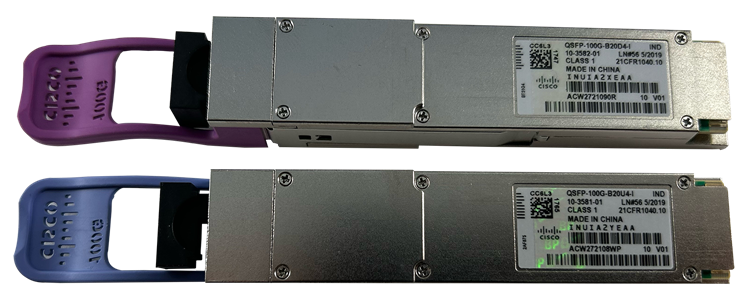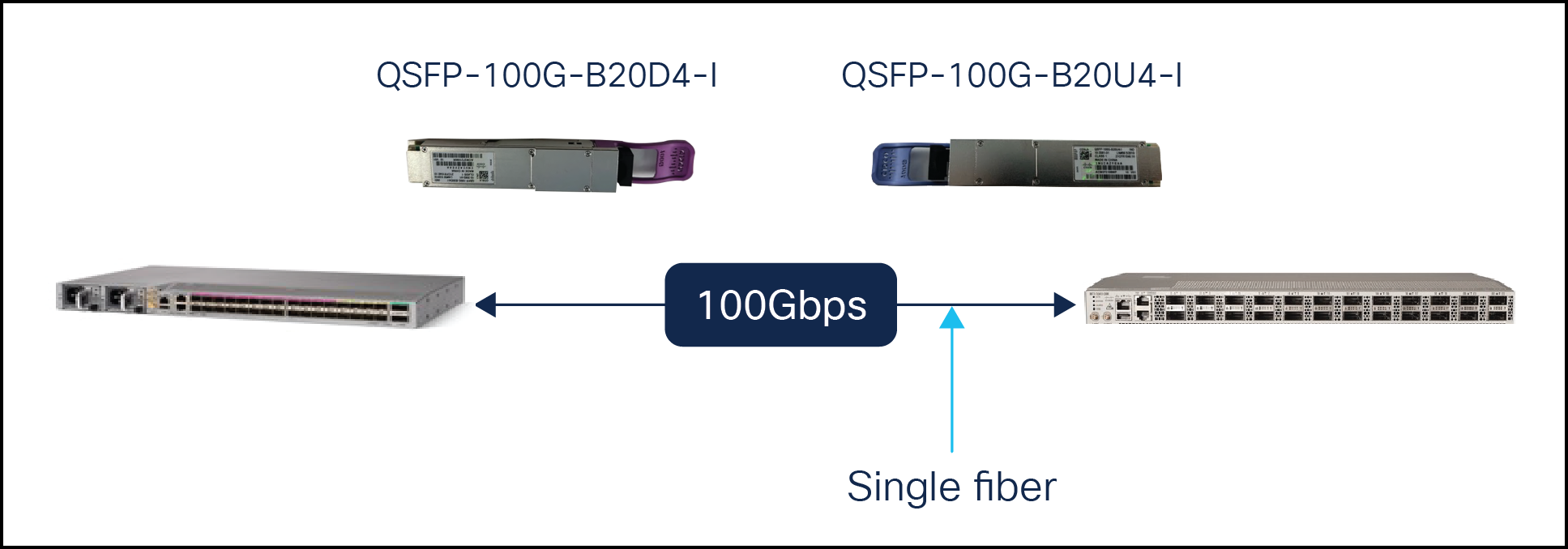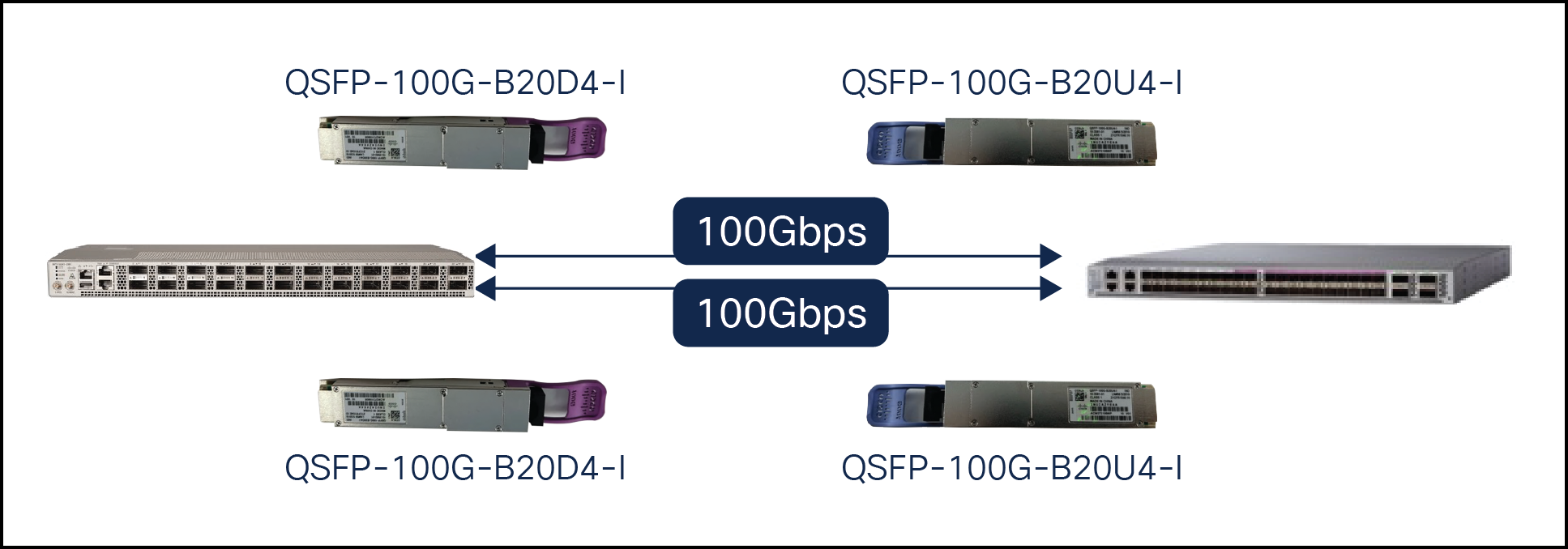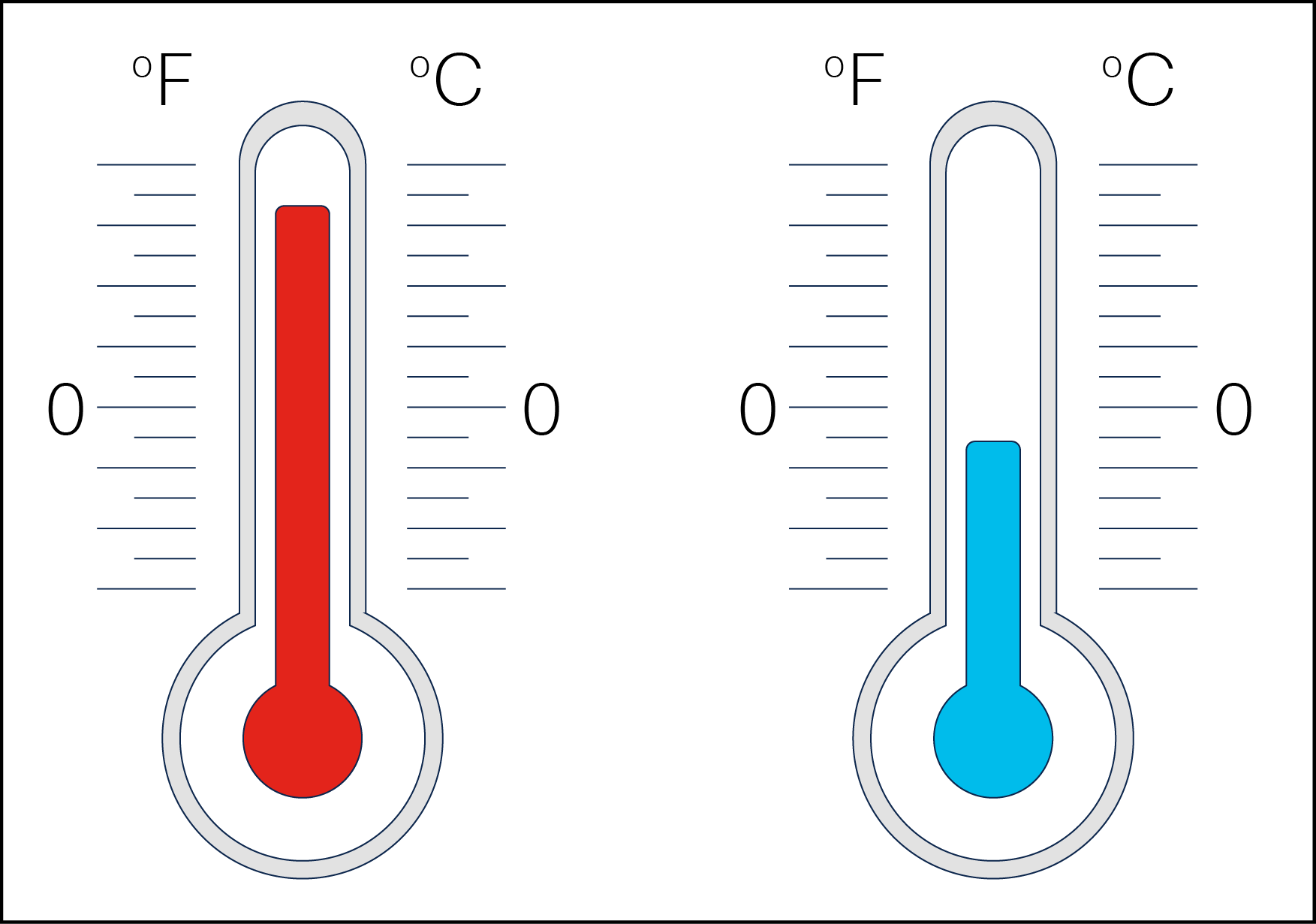Cisco QSFP-100G-B20U4-I and QSFP-100G-B20D4-I 100G 20km Bidirectional Pluggable Transceivers At a Glance
Available Languages
Bias-Free Language
The documentation set for this product strives to use bias-free language. For the purposes of this documentation set, bias-free is defined as language that does not imply discrimination based on age, disability, gender, racial identity, ethnic identity, sexual orientation, socioeconomic status, and intersectionality. Exceptions may be present in the documentation due to language that is hardcoded in the user interfaces of the product software, language used based on RFP documentation, or language that is used by a referenced third-party product. Learn more about how Cisco is using Inclusive Language.
Bidirectional 100Gb on a single fiber
Whether it’s building a network or upgrading an existing network, the Cisco® QSFP-100G-B20U4-I and QSFP-100G-B20D4-I transceivers provide 100G connectivity for platforms at up to 20km on single SMF (Single Mode Fiber).

QSFP-100G-B20U4-I and QSFP-100G-B20D4-I
The QSFP-100G-B20U4-I and QSFP-100G-B20D4-I transceivers provide single-fiber, full-duplex, 100Gbps connectivity as network traffic continues to grow driven by new wireline and wireless applications.
The QSFP-100G-B20U4-I and QSFP-100G-B20D4-I operate in pairs, with one required at each end of the optical fiber.

QSFP-100G-B20U4-I and QSFP-100G-B20D4-I provide 100Gbps, full-duplex 20km connectivity on a SMF
● Full-duplex 100Gb at up to 20km on single SMF
● Saves optical fiber
● Works in QSFP28 ports
● Operate in pairs (one at each end of optical fiber)
● Applications include: wireless, service provider, data center, and enterprise
● Supported on many Cisco platforms
Bidirectional 100Gb applications
Applications today requiring 100G 20km directional transceivers include:
● Wireless: Aggregating 4G and 5G front-, mid-, and backhaul routers
● Service provider: Connecting business customers to COs or headends
● Data center: Connecting regional customers to data centers
● Enterprise: Linking metro offices

Wireless application using QSFP-100G-B20U4-I and QSFP-100G-B20D4-I
200Gbps on a pair of fibers using the same platforms
Using 2x QSFP-100G-B20U4-I and 2x QSFP-100G-B20D4-I on a pair of SMF between the same platforms, provides 200Gbps of bandwidth. This configuration also provides network resiliency in the event that one of the optical paths is broken.

200Gbps using two pairs of QSFP-100G-B20U4-I and QSFP-100G-B20D4-I on a pair of SMF
What’s unique about the QSFP-100G-B20U4-I and QSFP-100G-B20D4-I transceivers is that they operate in the O-band where fiber optic dispersion is minimal and use traditional low-power NRZ (nonreturn to zero) modulation. The lasers are based upon the LAN WDM grid technology found in other 100G, 200G, 400G, and 800G transceivers. The “4” in QSFP-100G-B20U4-I and QSFP-100G-B20D4-I refers to the number of transmitters and receivers used by each transceiver. As shown in Figure 4, the transmit signal of the QSFP-100G-B20U4-I and QSFP-100G-B20D4-I consists of four transmitters that are muxed into a single optical fiber through a Diplexer filter. The Diplexer filter separates the receive wavelengths that are demux and feed into four receivers. This happens in both directions on different wavelength groups simultaneously enabling full-duplex transmission on a single fiber.

Block diagram of QSFP-100G-B20U4-I and QSFP-100G-B20D4-I
The wavelength groups are:
x1-x4 wavelengths: 1274, 1278, 1282, and 1287nm
x5-x8 wavelengths: 1296, 1300, 1304, and 1309nm
Within each group, the wavelengths are spaced approximately 4.5nm apart. The 1291nm wavelength is skipped as a guard band between the groups.
The QSFP-100G-B20U4-I and QSFP-100G-B20D4-I transceivers require host-based RS-FEC (Reed Solomon Forward Error Correction) and provide DOM (digital optical monitoring).
The QSFP-100G-B20U4-I and QSFP-100G-B20D4-I require up to 5.0W over the full industrial temperature range, which is higher powered than many other QSFP28 transceivers platform. Therefore adequate cooling is required.
Low latency = advantages of NRZ
NRZ modulation enables the QSFP-100G-B20U4-I and QSFP-100G-B20D4-I transceivers to operate with low latency, providing IEEE-1588 PTP Class C–compatible performance and making them ideal for 5G wireless front/mid/ backhaul and other low-latency applications where predicable performance is needed.
Industrial temperature operation
The operating temperature range of the QSFP-100G-B20U4-I and QSFP-100G-B20D4-I transceivers is -40˚ to +85˚C, with a mission mode operating range of -20˚ to +85˚C. This is important in 5G fronthaul and other applications where temperature control may not be available.
Note: Industrial temperature-rated transceivers also operate in commercial temperature-rated platforms.

QSFP-100G-B20/D4-i industrial temp rated
Summary of QSFP-100G-B20U4-I and QSFP-100G-B20D4-I specifications:
Table 1. QSFP-100G-B20U4-I and QSFP-100G-B20D4-I specification summary
| QSFP-100G-B20U4-I and QSFP-100G-B20D4-I |
|
| Data Rate |
100G |
| Reach |
20km |
| Fiber |
SMF |
| Wavelengths |
1296, 1300, 1304, and 1309nm 1274, 1278, 1282, and 1287nm |
| Max Power |
5.0W |
| Optical Connector |
Simplex-LC |
| Pull Tab Color |
Slate Blue and Purple |
| Required Host FEC |
RS-FEC |
| DOM |
Yes |
| Coding |
NRZ |
| IEEE-1588 PTP |
Class C Compatible |
| Form Factor |
QSFP28 |
| Operating Temp |
-20° to +85°C (Noncondensing) |
More detailed specifications for the QSFP-100G-B20U4-I and QSFP-100G-B20D4-I can be found at “Cisco Optics Product Information”: https://copi.cisco.com/.
The configurations and software requirements for operation of the QSFP-100G-B20U4-I and QSFP-100G-B20D4-I in Cisco platforms can be found in Cisco’s Optics-to-Device Compatibility Matrix
To determine the interoperability of the QSFP-100G-B20U4-I and QSFP-100G-B20D4-I with other Cisco transceivers, please see Cisco’s Optics-to-Optics Compatibility Matrix.